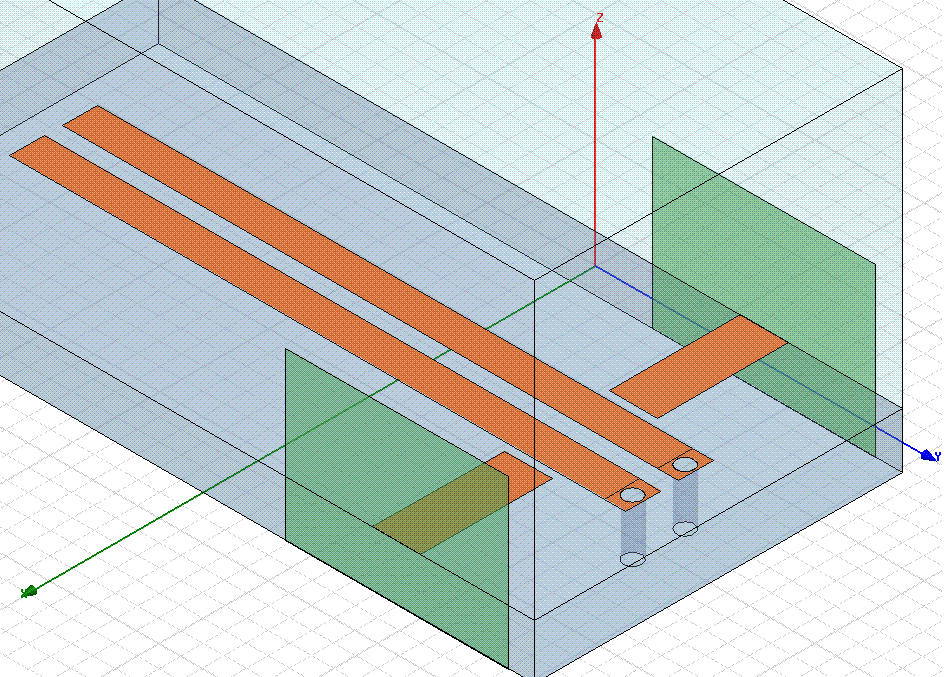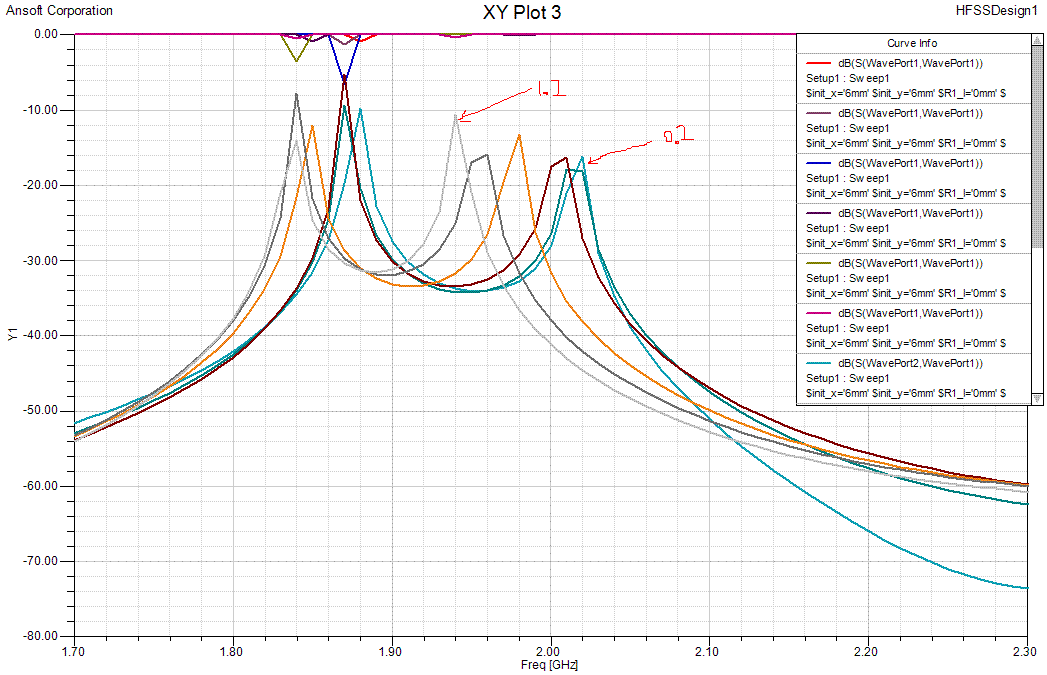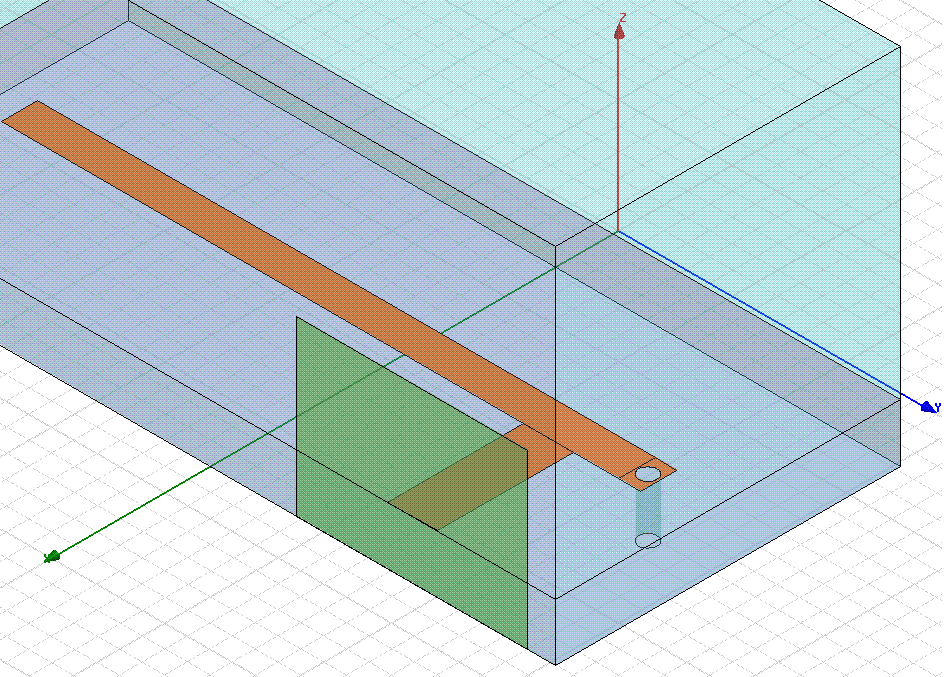Problems in extracting coupling coefficient (or Qe) curve
Step 1: extract coupling coefficient between two resonators
The model was established in HFSS11.0. As can be seen below, a pair of resonators is loosely coupled by the open-circuit transmission line. Then the simulation result shows double peak response as expected. But when I increased the gap distance between the two resonators, double peaks both shift to low side, which means the center frequenc decreased. I thought these two peaks would shift in opposite direction and the center frequency keep unchanged. Is my original idea wrong? If I am right, can anyone tell me why center frequency shifts as coupling between the two resonators decrease?


Step 2: extract external Q
The model and the simulation result can be seen below. The same problem happened as step 1. Center frequency( where the phase of S11 changes most dramatically) shifts as tapped point varies!


Please help. Thank you in advance!
Lately, I was told that the extracted coupling coefficient and Qe using this approach would not be accurate. But no one around me kowns why! Is it the problem of HFSS?
I think a better method is to use the reflected group delay.
See the link about filter couplings on this page which is an article from Applied Microwaves and Wireless (May 1999)
http://www.rfshop.co.uk/blog/Filters/
Filters can be generally time consuming to fully calculate and optimise using full 3D solvers like CST/MWS and HFSS. You can get very close, very quickly, using circuit simulators like ADS and MWO.
Then HFSS or MWS can be used for the final small adjustments.
Hi PeterMartin:
Thank you for your suggestion. I do think it is a more effective way to use circuit simulators at first. But maybe you misunderstood what I mean. I just doubted the validity of my steps to extract coupling coefficient (or Qe) curve using HFSS, and I also had met a problem of frequency shift when using this method which confused me.
Hi dear friend ,
I'm trying to simulate coupling between two combline resonators.
but I dont know how to do this by using HFSS10 and extract coupling diagrams via eigen mode solver of HFSS.
can u help me please?
regards
extracting Problems coupling 相关文章:
- Looking for information about extracting eye diagram with CST MWS
- Problems extracting RLGC parameters for various substrate resistivities in HFSS
- Extracting S parameter model in HyperLynx
- Extracting information from a CST project file and saving it in an Excel format
- Extracting broad band RLC model from S-parameters for a DGS band-stop filter.
- Extracting currents or fields from hfss
